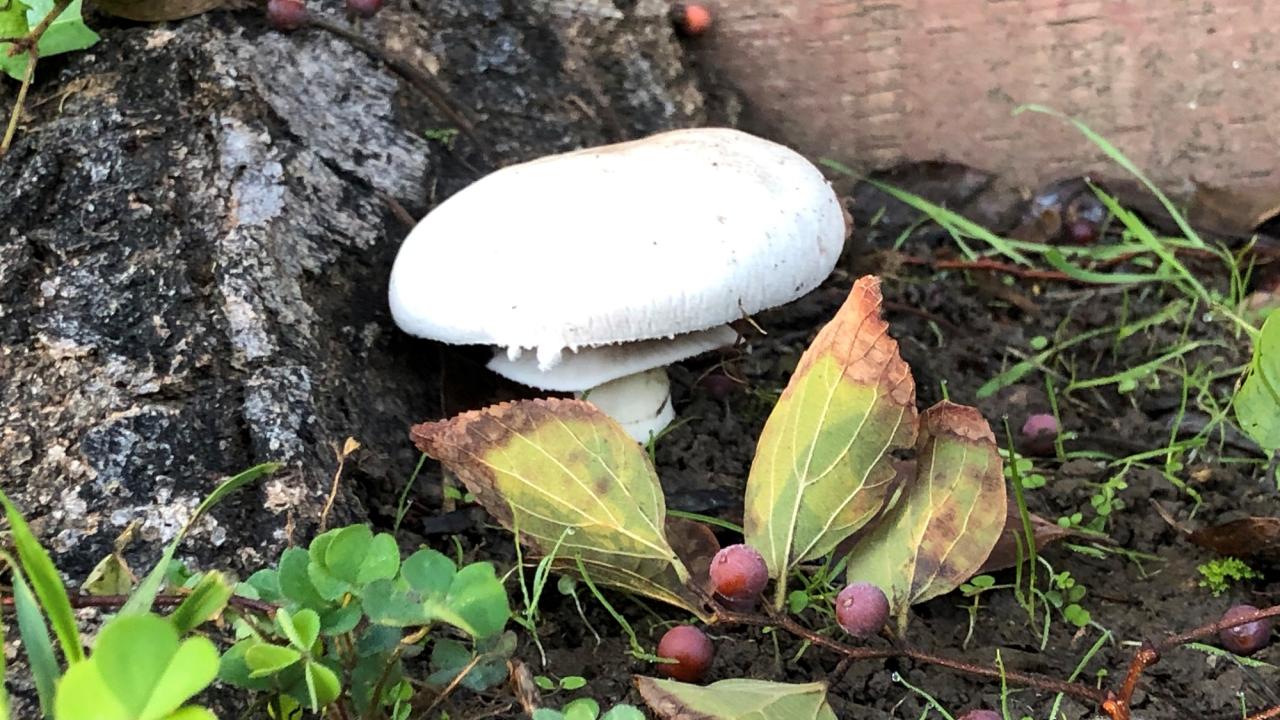
Mushroom Toxicity in Dogs
Takeaways
- Wild mushroom species, such as Amanita phalloides (“death cap mushroom”), can be extremely toxic, and even fatal, to dogs.
- Clinical signs of mushroom toxicity can include vomiting, diarrhea, liver failure, tremors, and seizures.
- If you suspect that your dog has ingested a toxic mushroom, contact a veterinarian immediately.
Where do mushrooms fall on the list of things dogs can and can’t eat? The good news is that it’s probably not an emergency if Spot grabs a slice of button mushroom off the kitchen floor, or sneaks a bite of Portobello off the grill. Trouble is more likely to arise from mushrooms that he may encounter while sniffing around in parks, woods, or even your own backyard. However, it is ideal not to feed any mushrooms to your dog.
Toxic mushrooms can be difficult to differentiate from non-toxic ones, but a few species are notorious for causing serious problems. Among these, the Amanita phalloides, or “death cap mushroom”, is particularly toxic to animals (and humans). Found throughout Northern California and many other locations, this mushroom can be fatal, even in small amounts. One of the most poisonous of all known mushrooms, its toxins can cause liver failure within 24 hours and can also damage other organs such as the kidneys and intestinal tract.
Additional mushroom species that are toxic to dogs include Amanita gemmata (“jeweled deathcap”), Amanita muscaria (“deadly agaric”), Galerina marginata (“deadly Galerina”), Gyromitra species (“false morel”), Inocybe species and Clitocybe dealbata.
If your dog ingests a wild mushroom, don’t worry about trying to identify the specific type - there are over 10,000 known mushroom species. Time is of the essence and it is important to get your dog to a veterinarian as soon as possible if they have ingested a toxic mushroom. While your veterinarian may not be able to identify the exact species of mushroom, you can grab a piece of the mushroom (wrap it in a damp paper towel and place in a plastic bag) to show your veterinarian. Be sure to wash your hands thoroughly and to be careful to prevent further exposure to you or others in your household. You can also contact the ASPCA Animal Poison Control Center (APCC) for any animal poison-related emergency, 24 hours a day, 365 days a year. If you think your pet may have ingested a potentially poisonous substance, call (888) 426-4435. A consultation fee may apply.
Clinical signs of mushroom toxicity in dogs vary depending on the species of mushroom. Different species contain different toxins, which can in turn have specific effects. Any underlying conditions the dog may already have can also contribute to their response to the toxin. Clinical signs of mushroom toxicity can include gastrointestinal issues such as vomiting and diarrhea, increased or decreased urination, liver failure, kidney injury, excessive salivation, and neurological signs such as tremors and seizures.
Treatment for mushroom toxicity in dogs depends on the type of mushroom ingested, the clinical signs, and how recently ingestion occurred. If one of the previously discussed, highly toxic species is suspected, emergency treatment to try to remove as much of the toxin as possible is imperative. Techniques such as total plasma exchange and plasma absorption (using a specialized machine to remove toxins from the blood), may prevent a fatal poisoning if performed soon after ingestion. Drugs may be administered to counteract the toxin, and supportive care (such as intravenous fluids) may be required.
It is safest to assume that all wild mushrooms that your dog encounters are toxic. Monitor your backyard for mushrooms, especially during periods of warm, wet weather when they like to grow. Keep a close eye on your dog when walking or hiking in parks, wooded, or rocky areas during these prime growing seasons as well.
If you suspect that an animal may have ingested a toxic mushroom, contact your regular veterinarian or the UC Davis emergency room immediately.
*This article may not be reproduced without the written consent of the UC Davis School of Veterinary Medicine.
